 |
|
New book chronicles the early history of the Salk Institute
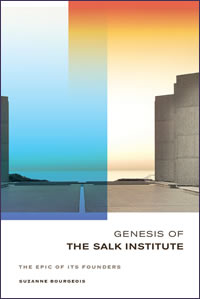 Perched on the high ocean bluffs of La Jolla, the Salk Institute has served as both an architectural and scientific icon for more than half a century. Yet little has been written about the remarkable people who came together to form one of the world's most influential scientific institutions. Who were the founders? What happened to them during World War II? What did they do after the war? Perched on the high ocean bluffs of La Jolla, the Salk Institute has served as both an architectural and scientific icon for more than half a century. Yet little has been written about the remarkable people who came together to form one of the world's most influential scientific institutions. Who were the founders? What happened to them during World War II? What did they do after the war?
In a new history, titled Genesis of the Salk Institute: The Epic of Its Founders, Salk professor Suzanne Bourgeois tackles these questions, telling the story of how and why, born far apart, the founders of the Salk Institute eventually gathered in La Jolla in the early 1960s to create an exceptional institution. Released last month, the book is available through University of California Press and Amazon.
"Jonas Salk should be recognized for two major achievements: One is the polio vaccine and the other is the Salk Institute," says Bourgeois, a professor and founder of the Regulatory Biology Laboratory. The new book is a personal account of the origins and early years of the Salk, and Bourgeois crafts an engaging study that draws on her involvement with the Institute since its founding and on related archives, interviews and informal conversations. "I think I'm probably the only one who has daily records of what happened," she says.
The volume discusses the people who founded the Institute and built a home for pioneering research---- leading scientists of the time as well as non-scientists of stature in finance, politics, philanthropy, publishing and the humanities. The events that brought these individuals together, the historic backdrop in which they worked, their personalities, their courage and their visions, their clash of egos and their personal vanities are woven together in a rich, engaging narrative about the founding of a world-premier research institution.
|
|
|
Congratulations
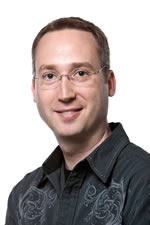 Axel Nimmerjahn has received a highly competitive EUREKA (Exceptional Unconventional Research Enabling Knowledge Acceleration) grant from the National Institutes of Health. Nimmerjahn is an Assistant Professor in the Waitt Advanced Biophotonics Center and holds the Richard Allan Barry Developmental Chair. The EUREKA program was conceived specifically to assist scientists such as Nimmerjahn to test new, innovative ideas or tackle major methodological or technical challenges. The award will support Nimmerjahn's goal to better understand the relationship between spinal cord physiology and brain activity and behavior--research that should foster development of new treatment and rehabilitation strategies for spinal cord injury, tumors, infections and neurodegenerative diseases such as amyotrophic lateral sclerosis (ALS) and spinal muscular dystrophy.
Read more»
Mark Huising, Staff Scientist in the Clayton Foundation Laboratories for Peptide Biology, was selected by the Juvenile Diabetes Research Foundation (JDRF) for a five-year Career Development Award for his proposed study on how a novel network of receptors in human islets receives and integrates molecular signals. In pre-clinical models, activation of these receptors has proven to actually prevent diabetes. The goal of Huising's research is to understand how this protection against diabetes is accomplished.
Read more» |
Scientific discovery at the Salk Institute is made possible through annual contributions from individuals, organizations, corporations and foundations. Your support will accelerate the pace of breakthroughs in understanding disease and pave the way to new drug therapies.
|
Salk earns third consecutiveCharity Navigator 4-star rating
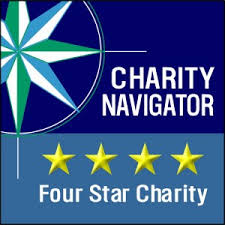 Charity Navigator, the nation's largest evaluator of non-profit business and financial operations, has bestowed a 4-star rating for "sound fiscal management" on the Salk---- our third year in a row. This top evaluation was determined as a result of a team of professional analysts examining tens of thousands of non-profit financial documents. Charity Navigator, the nation's largest evaluator of non-profit business and financial operations, has bestowed a 4-star rating for "sound fiscal management" on the Salk---- our third year in a row. This top evaluation was determined as a result of a team of professional analysts examining tens of thousands of non-profit financial documents.
Ken Berger, president and CEO of Charity Navigator, stated: "We are proud to announce the Salk Institute for Biological Studies has earned our 4-star rating for its fiscal health and commitment to accountability and transparency. Only 11 percent of the charities we evaluate have received our highest rating three years in a row, indicating that Salk Institute for Biological Studies executes its mission in a fiscally responsible way, and outperforms most other charities in America. This "exceptional" designation from Charity Navigator differentiates the Salk Institute for Biological Studies from its peers and demonstrates to the public it is worthy of their trust."
|
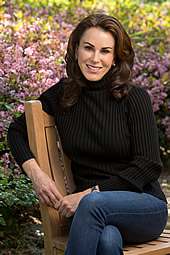 We are pleased to announce that Elizabeth 'Liz' Keadle has been elected as the newest member of our distinguished Board of Trustees. Ms. Keadle is an alumna of the Institute who, while a student at the University of California San Diego, worked in the Peptide Biology Laboratory of Wylie Vale. She later entered the biotech business community and rose to key technical and business leadership positions at Pharmacia AB. At the same time, she became involved in the start-up and launch of the local biotech company, Invitrogen Corporation, which grew to become the world's largest biotech research supply company. Invitrogen, later renamed Life Technologies, was sold in 2013 to Thermo-Fisher for $13.6 billion. A longtime Salk supporter, Ms. Keadle created an endowment in support of the Vale lab in perpetuity and recently established the Wylie Vale Chair as a lasting legacy to honor the late scientist. Read more»
|
Welcome Anna-Marie Rooney
 Please join us in welcoming Anna-Marie Rooney, recently appointed the Chief Communications Officer for the Institute. Prior to coming to Salk, Ms. Rooney served as the Vice President/Chief Strategy and Brand Officer for The San Diego Foundation, the largest community foundation in the San Diego region. Over the course of six years, she successfully created, organized and implemented the marketing and communication strategies and tactics for the foundation, including the oversight and management of all promotional and public relations efforts for the Our Greater San Diego Vision initiative, resulting in 30,000 participants, $3.5 million in media exposure and 386 million media impressions. Ms. Rooney is a gifted and skillful communicator who brings an outstanding combination of practical experience and strategic planning to this critical role. We look forward to her leading our communications enterprise to the next level.
|
|
Pedal the Cause
The Salk Institute is very excited to be part of the first annual Pedal the Cause San Diego----an epic weekend cycling event on October 26 and 27 to benefit San Diego's three cancer centers: the Salk Institute for Biological Studies, UC San Diego's Moores Cancer Center and Sanford-Burnham Medical Research Institute.
Pedal the Cause San Diego's aim is to raise much-needed funds for cancer research and to promote stronger relationships among San Diego's complementary research centers. Their ultimate goal is to expedite innovative cancer treatments from the labs to the patient's bedside by encouraging collaboration.
By sponsoring our riders, you are supporting the Salk's continued commitment to cancer discovery.

|
Science News
Lei Wang and his colleagues have developed a method of using light to alter specific proteins inside neurons. The new technique could help illuminate long-standing mysteries about brain biology.
Salk Scientists Create A Light Switch For Brain Proteins
KPBS
A recent study from Sreekanth Chalasani's lab demonstrated a striking example of the flexibility in neural circuitry and its influence on behaviors in the roundworm Caenorhabditis elegans, depending on the animals' environment. Chalasani plans to investigate whether there are other fast neural circuit switches in worms---- and if so, whether those switches act through neuropeptide signaling or some other mechanism---- research that will further our understanding of how the nervous system processes sensory information.
Read more»
A Detailed Map Of Neural Connections in Human Brain Is Being Developed by Scientists
MedIndia
|
|
Tickets now on sale!
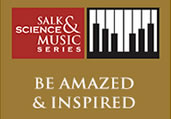 The first concert of the Salk Science and Music series on October 6 opened to a sold out crowd and was a resounding success! Don't wait to purchase tickets for the next event on November 10 featuring pianist Naomi Kudo and a discussion by Salk scientist Greg Lemke. The first concert of the Salk Science and Music series on October 6 opened to a sold out crowd and was a resounding success! Don't wait to purchase tickets for the next event on November 10 featuring pianist Naomi Kudo and a discussion by Salk scientist Greg Lemke.
Kudo was awarded the 2007 Chopin Prize and was a consecutive winner of two Gina Bachauer International Piano Competitions, the most prestigious prize at the Juilliard School of Music. In 2008, she received the Gilmore Young Artist Award. Kudo has received the Ryoichi Sasakawa Young Leaders Fellowship at Juilliard, was Juilliard's recipient of the 2009 Arthur Rubinstein Prize and won the 2011 Juilliard/Sanders/Tel Aviv Museum Recital Prize.

Join us on
November 10, 2013,
featuring pianist,
Naomi Kudo and
Salk scientist
Greg Lemke.
Prompted by a magnificent gift of Steinway Concert Grand #191 from generous Salk benefactor Conrad Prebys, the Institute has organized this ambitious program that melds both amazing science and inspiring music for the San Diego community. The six concert series, which debuted in October and will run through May of 2014, provides a venue to feature some of the hottest emerging classical and jazz musicians, and also includes fascinating scientific presentations of the latest discoveries occurring in Salk labs by our world-renowned faculty. This special blend of art and science sets this program apart from all others.
For more information and to purchase tickets, visit the website at:
|
Former Salk scientist receives Nobel Prize
Congratulations to Michael Levitt, of Stanford University, for receiving the 2013 Nobel Prize in Chemistry for his work developing multiscale computer models for complex chemical systems. 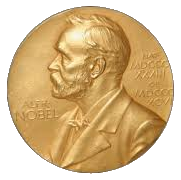 Levitt spent two years as a visiting professor at the Salk Institute in the late 1970s, collaborating with Nobel laureate Francis Crick. He shared the prize with Arieh Warshel, a researcher at the University of Southern California, and Martin Karplus, of Harvard University and the Université de Strasbourg, France. The three scientists laid the foundation for the powerful programs that are used to understand and predict chemical processes. Computer models mirroring real life have become crucial for most advances made in chemistry today. |
|
Question of the Month
This dynamic image depicts axons extending from mouse neurons-and appears remarkably similar to the spectacular glass sculpture gifted to the Institute by Joan and Irwin Jacobs that is on permanent display in the Institute's reception area.
What is that sculpture and who is the artist?
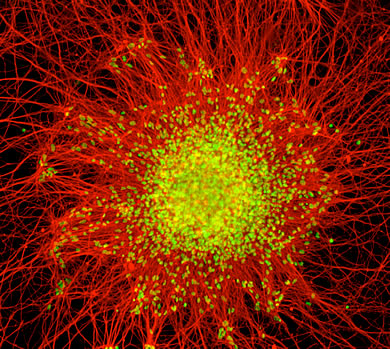 Image: Courtesy of the Salk Institute for Biological Studies;
Samuel Pfaff, Gene Expression Laboratory
Post your answer to our Facebook page:
One randomly chosen winner from the entries with the correct answer will win a special memento of Salk merchandise. (Your choice of a t-shirt or coffee cup.)
|
|
|
|
Upcoming Events
Motor Systems Seminar November 8, 2013 More»
Salk Science and Music Series
Featuring Pianist
Naomi Kudo November 10, 2013 More»
Glenn Center for Aging Research Symposium December 6, 2013 More»
Crick-Jacobs Symposium December 19, 2013 More»
Salk, Fondation IPSEN, Nature Symposium January 29-31, 2014 More»
FEATURED IMAGE  This dynamic image depicts axons extending from mouse neurons. This dynamic image depicts axons extending from mouse neurons. This month's image courtesy of Sam Pfaff, Professor, Gene Expression Laboratory, Salk Institute for Biological Studies. Each month our featured image will provide a shot of art and science. Download the image and use it as your computer desktop wallpaper, smartphone background or facebook timeline photo. Download» |
|